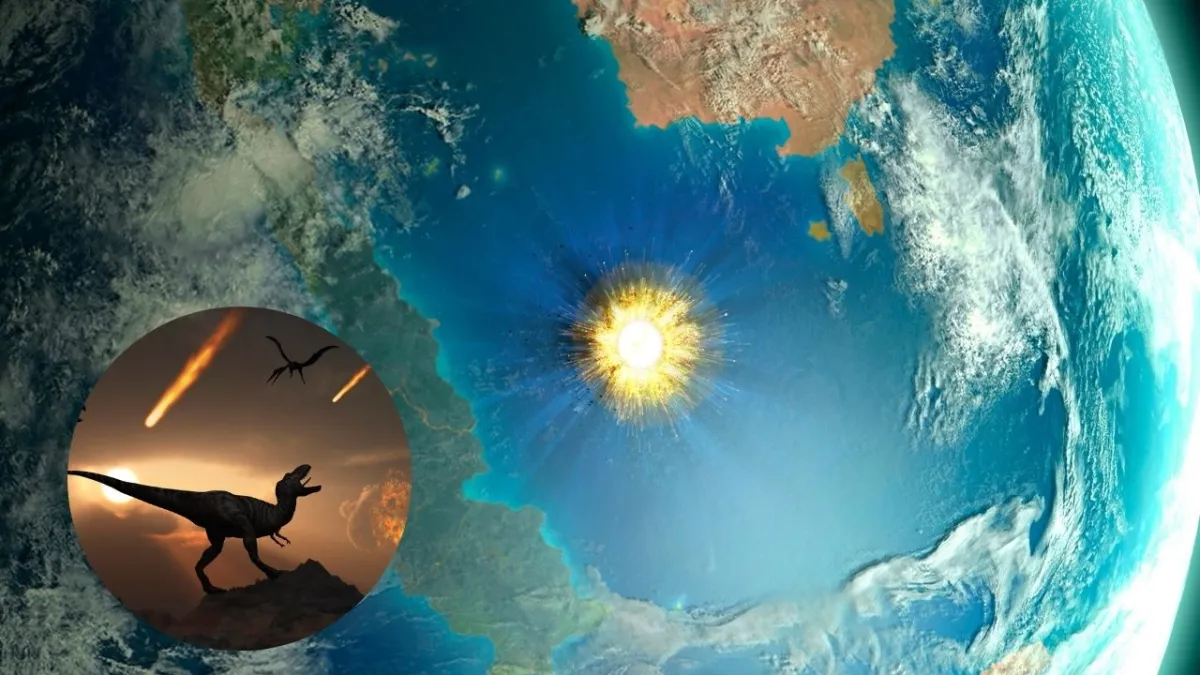
Approximately 66 million years ago, a catastrophic event forever changed Earth’s history. A meteorite about 10 kilometers in diameter hit, triggering a series of events that led to the extinction of approximately 75% of species, including dinosaurs.
This impact left a scar on the Earth that we know as the Chicxulub crater. a site that has been the subject of extensive scientific studies due to its historical and geological importance.
>>> You can read: Theories about a plane that disappeared for more than 50 years: attack, aliens, sabotage?
Where is the Chicxulub crater, where the asteroid that wiped out the dinosaurs impacted?
It is located on the Yucatan Peninsula, in Mexico. This crater, which, according to National Geographic, has a diameter of 177 kilometers, is partially submerged in the Gulf of Mexico and extends underground in the region of Chicxulub, a small town that gives its name to the crater. lThe exact location of the crater has been confirmed through geophysical studies and drilling that have revealed its structure and composition.
The crater was discovered in the 1970s by geophysicists searching for oil in the region. Evidence of the impact is found in a layer of sediment rich in iridium, a metal rare in the Earth’s crust but common in meteorites, which was deposited around the world after the impact.
Geological studies have revealed that the meteorite impact released energy equivalent to billions of atomic bombs, causing massive forest fires, giant tsunamis and an “impact winter” that lasted several years. This winter was caused by dust and aerosols that blocked sunlight, cooling the planet and disrupting global ecosystems.
>>> Read also: Neither Ukraine nor North Korea: this is the most dangerous country in the world in 2024
Research published by the scientific journal Sciencie has determined that The meteorite that created the Chicxulub crater was a carbonaceous chondrite asteroid, a rare type of meteorite that formed in the outer regions of the solar system, beyond the orbit of Jupiter.
Getty Images
This finding is based on isotope analysis of ruthenium, a platinum group element, found in sediment layers of the K/Pg boundary (Cretaceous-Paleogene). The ruthenium isotopes in these layers match those of carbonaceous meteorites, suggesting that the asteroid had an origin far away in the solar system.
The impact of the Chicxulub meteorite had devastating consequences for life on Earth. In addition to non-avian dinosaurs, many other plant and animal species also became extinct. Marine and terrestrial ecosystems collapsed, and only the smallest, most adaptable species managed to survive. This event marked the end of the Cretaceous period and the beginning of the Paleogene, a new era in Earth’s history.
Paleontological studies have shown that the mass extinction allowed the diversification and evolution of mammals, which eventually led to the emergence of humans. Without the Chicxulub impact, dinosaurs may have continued to dominate the planet, and the evolution of mammals may have followed a very different path.

Getty Images
Chicxulub crater continues to be investigated
The Chicxulub crater continues to be a focus of scientific research. In 2016, an international team of scientists drilled into the crater to obtain rock samples from the peak ring, a central feature of the crater formed by the rebound of the ground after the impact. These samples have provided valuable information on the dynamics of the impact and recovery of the ecosystem.
Additionally, studies continue to explore the implications of the impact on Earth’s geology and biology. Scientists are using advanced computational models to simulate the impact and its long-term effects, helping to better understand how catastrophic events can influence the evolution of life on the planet.
Source: https://www.noticiascaracol.com/mundo/el-lugar-exacto-donde-cayo-el-asteroide-que-extinguio-a-los-dinosaurios-esta-en-america-so35


